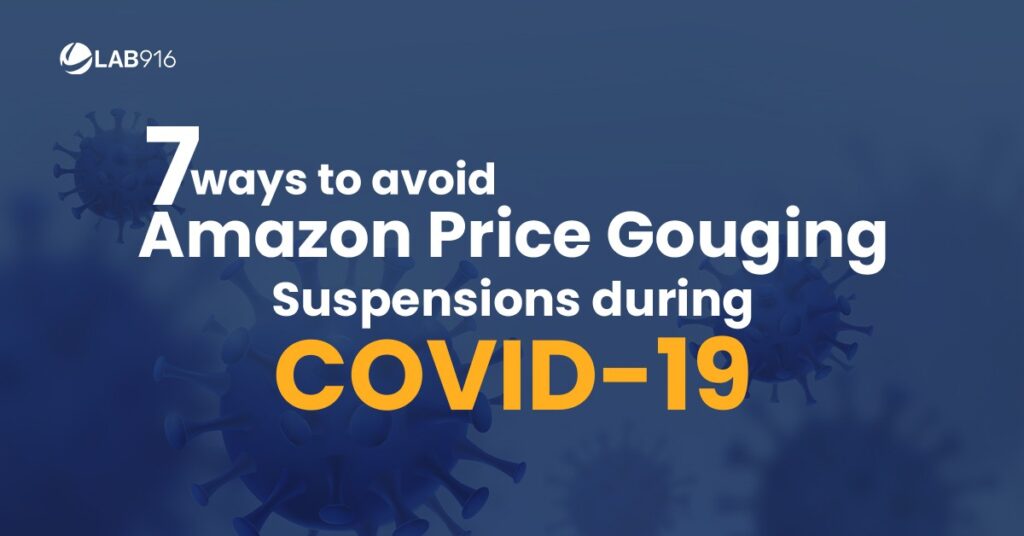Amazon Price Gouging
There are a few tips sellers can follow to avoid listing and account suspensions while Amazon bots are on high alert for Amazon price gouging during COVID-19.
Although we revealed in a previous blog that Amazon’s guidance on avoiding price gouging-related suspensions is limited, there are still a few things Sellers can do.
Read on to find out more about how you can actively protect your inventory from being deactivated for pricing violations.
1. Monitor Prices
Amazon’s bots are armed with artificial intelligence that is designed to constantly examine every aspect of a Seller’s account.
Because an Amazon bot may catch a price increase on a product before the seller is aware of the violation, Sellers will need to invest time or money into constantly monitoring product prices. Otherwise, once a bot identifies a pricing error, an automated suspension may be applied without warning.
2. Don’t Set Unfair Prices for Essential Products
Obviously.
Savvy Sellers may have the urge to respond to whittling supply and increased demand. If you’re seeing your competitors overpricing items or inflating MSRPs to make their offers look like a bargain, you’ll want to abstain from participating.
It’s not worth the lost income and headache to get your account reinstated.
3. Stay On Top of Inactive Inventory
There are two types of inventory, active and inactive. Learn how to manage your Amazon inventory like a pro.
Active inventory is available for sale on the marketplace. Inactive inventory is not available for sale and is not listed publicly. However, although inactive inventory isn’t public, it remains a part of the Seller’s account inventory.
Inactive items that violate Amazon policy can still trigger a violation and result in suspension.
To avoid suspension, you’ll want to delete any item that isn’t in stock and monitor pricing on the remaining inactive inventory.
4. Monitor Software Settings
Don’t let your automatic repricing software decide your pricing strategy for you.
Many sellers use pricing software to manage their products, so they don’t have to manually enter prices for multiple listings. If you utilize third-party software to control pricing, ensure that your settings are properly configured with a maximum price.
5. Review Bulk-item Pricing
If you’re a seller that sells bundled products, ensure that you aren’t selling packs for more than you’d charge for them individually.
You’ll want to make sure that any bulk-sold items are properly detailed within your inventory to prevent mistake suspensions.
6. Review Shipping Fees
Set a fixed price for shipping fees.
And remember: It’s against the rules to increase your shipping price so it costs more for the item itself or to raise the asking price after the order is confirmed.
7. Follow Minimum and Maximum Price Validation Rules
There are a few other policies that Amazon enforces to protect against unfair pricing.
You’ll want to make sure that your prices abide by these rules in addition to following the Fair Pricing Policy.
- Your minimum item price must be greater than the minimum referral fees
- Your maximum item price must be less than 6 times more than the recent selling price (or $200, if higher)
The Takeaway
Although there are a lot of listings being deactivated by mistake, there are a few things that Sellers can take action on, including concerns about Amazon price gouging.
You’ll want to take an active role in deciding how to monitor your pricing strategies daily. In addition, keeping an eye on inactive inventory, shipping fees, and bulk pricing may play an important role in staying in Amazon’s good graces.
This can be too much to manage for many Amazon sellers. That’s why Amazon agencies like Lab 916 are here to help them manage and monitor these issues so they can focus more on other important business matters.


